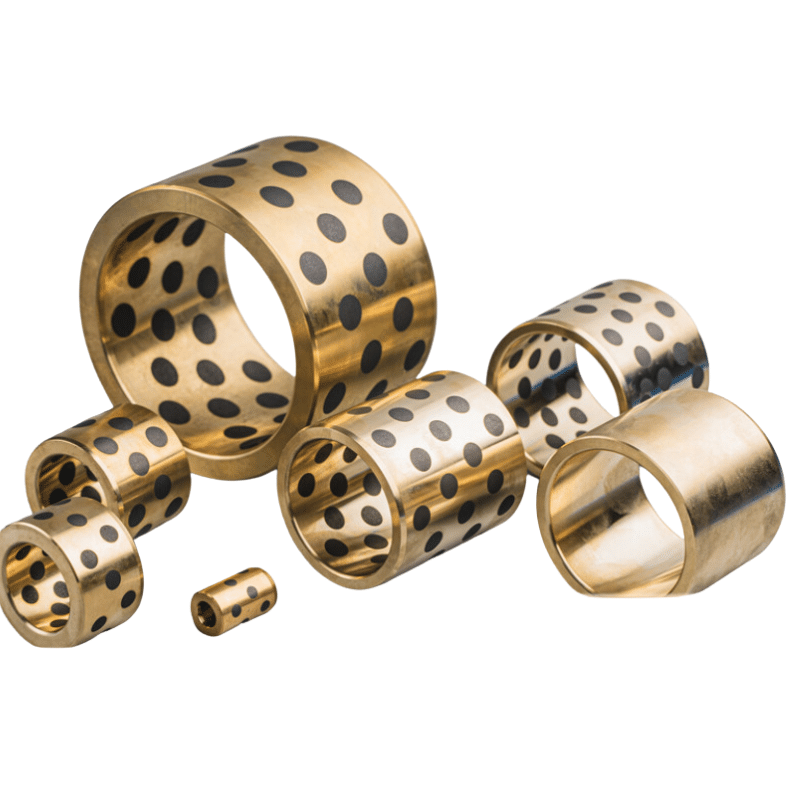non ferrous metals
Bearings and Bushings for the Future: Precision and Customization: Our company, in bearing engineering with decades of experience, designs and develops high-precision self-lubricating bronze bearings & plain bushes. We offer a wide array of sliding bearings tailored to meet specific needs. Renowned for our expertise in custom bronze bushing and slide plate solutions, we provide an expansive selection of bushing metal alloys. Contact us today to benefit from unparalleled services at competitive prices.
non ferrous metals
Explore Other Alloys, Suggested Searches: Copper Brass Bronze Copper Nickel
Bearing Bushing, Search Our Material Alloy

Non Ferrous Metals Bushing
Non Ferrous Metal Bronze Bearing
Understanding Non-Ferrous Metals: A Comprehensive Guide
Non-ferrous metals and alloys are essential materials in various industries due to their unique properties and applications. Unlike ferrous metals, which are iron-based and typically magnetic, non-ferrous metals do not contain iron and are generally non-magnetic. This article delves into the characteristics, types, and uses of non-ferrous metals, with a particular focus on copper-based alloys such as brass and bronze.
What Are Non-Ferrous Metals?
Non-ferrous metals are metals that do not contain significant amounts of iron. They are typically more resistant to rust and corrosion compared to ferrous metals. Common non-ferrous metals include:
- Copper
- Aluminum
- Lead
- Zinc
- Nickel
These metals are often found in the earth as oxides or sulfides and are extracted and refined for various industrial uses.
Copper: A Key Non-Ferrous Metal
Copper is one of the most widely used non-ferrous metals due to its excellent electrical and thermal conductivity, corrosion resistance, and malleability. It is often alloyed with other metals to enhance its properties for specific applications.
Copper-Based Alloys: Brass and Bronze
Copper-based alloys are categorized mainly into brass and bronze, each with distinct characteristics and uses.
Brass
Brass is an alloy of copper and zinc, with the zinc content typically ranging from 5% to 40%. The addition of zinc enhances the strength and ductility of the alloy. Brass is known for its bright gold-like appearance and is used in applications where low friction is required, such as locks, gears, bearings, and musical instruments.Example of Brass Alloy:
- C85500 (60-40 Brass): Contains up to 63% copper, 0.8% aluminum, and about 40% zinc.
Bronze
Bronze is primarily an alloy of copper and tin, but it can also include other elements such as aluminum, manganese, and lead. Bronze is known for its hardness and resistance to wear and corrosion, making it suitable for applications like bearings, bushings, and marine hardware.Common Bronze Alloys:
- Aluminum Bronze: Contains aluminum as the primary alloying element.
- Manganese Bronze: Contains manganese.
- Tin Bronze: Contains tin.
- Leaded Tin Bronze: Contains both tin and lead.
- High Copper Alloys: Contain a high percentage of copper with other elements.
Example of Bronze Alloy:
- C93200 (High-Lead Tin Bronze): Contains 83% copper, 7% tin, 7% lead, and 3% zinc.
- C95400 (Aluminum Bronze): Contains 85% copper, 11% aluminum, and 4% iron.
Properties and Applications of Copper-Based Alloys
Copper-based alloys, such as brass and bronze, offer a unique combination of properties that make them indispensable in various applications:
- Corrosion Resistance: Ideal for marine and industrial environments.
- Mechanical Strength: Suitable for high-stress applications.
- Friction and Wear Properties: Used in bearings and bushings.
- Electrical and Thermal Conductivity: Essential for electrical components.
Conclusion
Non-ferrous metals, particularly copper-based alloys like brass and bronze, play a crucial role in modern industry due to their diverse and valuable properties. Understanding the differences between these alloys and their specific applications can help in selecting the right material for your needs. For more information on customized bronze bearing metal bushings, please contact us.
Providing Brass, Bronze, and Specialty Copper Alloys, Copper Alloy Machining Services

Solutions For Every Industry
Searching for Dependable Bushing Solutions? viiplus Has What You Need.

Design Guides, Materials
Bushing design, Comprehensive design manuals covering a range of self-lubricating materials used in all of viiplus’s manufacturing processes.

Technical Guides
Manufacturing On Demand, Technical Guides For Machining Design. Discover the latest in metal alloys, materials, and design tips for manufacturing custom machined and self-lubricating bearing parts.

Get Instant Quote
To receive your instant quote, simply upload your drawing file and choose your production process & bushing material.

Prototyping, Place Order
After you place your order, we will start the production process. You will receive updates when your order has completed production and is ready to be dispatched.

Receive Your custom Parts
We provide precision-inspected high-quality parts, packing lists and documents, and delivery tracking.

